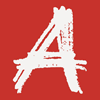What is Drawing?
I have this conversation with students time after time about how a practitioner can explore what they perceive to be drawing. It can be a really interesting or frustrating chat — I genuinely do love to hear what others see drawing as, and what they themselves do in response to that word. Some like to really explore and experiment, whereas others just want to perfect a certain technique, or maybe don’t feel they want to or can push those boundaries. For me, drawing is a translation, from one view to another. When people say they ‘can’t draw’, I find this frustrating as I think everyone can- it’s just what they believe their translations to be viewed as. I actually find that a slightly skewed version of say, a chair and table set, could be far more interesting that a study painstakingly drawn in HB as it offers that personal viewpoint and approach.
I think I felt encouraged to write this post because I often feel that students are very limited in their approach to drawing. I used to be guilty of this too at some point- sticking with comfortable media, at a comfortable scale…but it didn’t get me very far in those early days of finding my feet and aesthetic. What I really hope for my students is that they allow themselves to let go of their perceptions and really experiment with their drawings; push media boundaries, explore scale, work on a variety of surfaces, mix media and take risks.
Studying an art course especially gives you that chance and freedom to investigate, you sometimes don’t get that chance too often again once commissions start coming in for a certain style, or you are employed to work to specific briefs. Hopefully whatever paths you all take beyond the OCA you will find the time to still experiment and try new approaches, but whilst studying you absolutely should continuously embrace new possibilities! Eventually you will find your aesthetic but it will only truly come after you have eliminated techniques and built on others- only then will you be making fully informed and confident decisions.
I have listed a few practitioners that I personally feel push the concept of a ‘drawing’ and I hope it makes you think a little bit about what new things you could try with your own visual recordings. (Please note- opinions are my own, I don’t expect everyone to agree!)
Stacy Brafield is a textile artist who works across a variety of media. I particularly appreciate these installations where she has ‘drawn’ with video cassette tape as I love the bold and confident line quality. I used to set drawing tasks with students asking them to draw on a wall/floor/external space with electrical tape and this always produced some really great responses.
Debbie Smyth creates textural drawings using thread and pins- also showing that to draw you don’t always require conventional drawing materials.
Margaret Boozer is an artist choosing to explore surface and imagery using raw materials such as dirt. Her pieces have a beautiful range of surface, line and tonal qualities and show that you can create work from the natural materials around us. I chose to show her piece Red Dirt Drawing because I admire the translation of geometric forms using this material.
I wanted to include Alison Carlier because she surprised a lot of art critics by winning the Jerwood Drawing Prize in 2014 with an audio piece. She explores the concept of drawing through sound and I find it a really interesting approach; again proving that drawing isn’t just putting pen to paper sometimes. Drawing can also be time based (film)- so many possibilities! Please do go research her audio work- this is String Drawing:
I chose to include the work of Pae White and Gabriel Dawe because I like their use of drawing with thread in a much larger scale and using the lines to transform a space. I often encourage students to push their scale (if even to decide they actually hate working big and then find a scale they prefer!) and whilst I’m not suggesting to go this large, it is food for thought as to how the drawn line can differ across different sized surfaces/spaces.
Pae White
Gabriel Dawe
Tim Knowles’ Tree Drawings offer a really interesting concept of having no control over the drawn line. For one series in this group he attached traditional drawing tools to the bottom of weeping willow tree branches and allowed the elements to dictate the marks created. The movement of wind and motion of the branches created some really beautiful and sensitive drawn pieces. Could you create your own drawing tool? Myself and some old colleagues used to set this task and got really great results- one I specifically remember was a student who used ink coated tumble dryer beads to roll onto a variety of papers, the drawings were really great and had energy that she may not have been able to capture without abandoning total control.
Tim Knowles
Tim Knowles
I really like the surfaces created by Ula Einstein; she plays with various techniques to explore sensitive and delicate drawings. I chose to include her piece Kosmos to offer another drawing media- using heat and fire (being very careful obviously!!) to make marks.
Another artist pushing the boundaries of what drawing media/surface is is Hong Yi. She explores using materials such as burnt bamboo chopsticks, coffee cup stains and socks to create murals and portraits. What items in your everyday life could you use to create a mark?
Hong Yi
Hong Yi
Hopefully this post has given you some food for thought, and to maybe inspire a wider approach to our own practice too!
Originally published at WeAreOCA.
